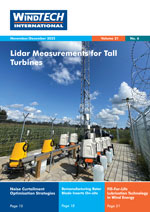Ørsted has received approval from the Offshore Infrastructure Regulator (OIR) for its feasibility stage management plan for the Gippsland Offshore Wind Farms 1 and 2, in Australia. The plan outlines how feasibility activities will be carried out safely and in compliance with the Offshore Electricity Infrastructure Act (OEI Act).
This approval allows Ørsted to begin feasibility activities, including a wind measurement campaign and geotechnical investigations, within the feasibility licence area in the Bass Strait, approximately 56 km off the Gippsland coast.
The activities will include geotechnical testing and seabed sampling to collect essential data on seafloor composition, informing the overall design of the proposed offshore wind farm. The geotechnical survey programme, conducted using a survey vessel, will include seabed cone penetration testing and grab sampling, following earlier preliminary works in Victorian waters.
Additionally, two Floating Light Detection and Ranging (FLiDAR) systems will be deployed to measure wind, weather, and ocean (metocean) conditions. These systems will be installed at two locations within the licence area, where they will remain for up to two years.










